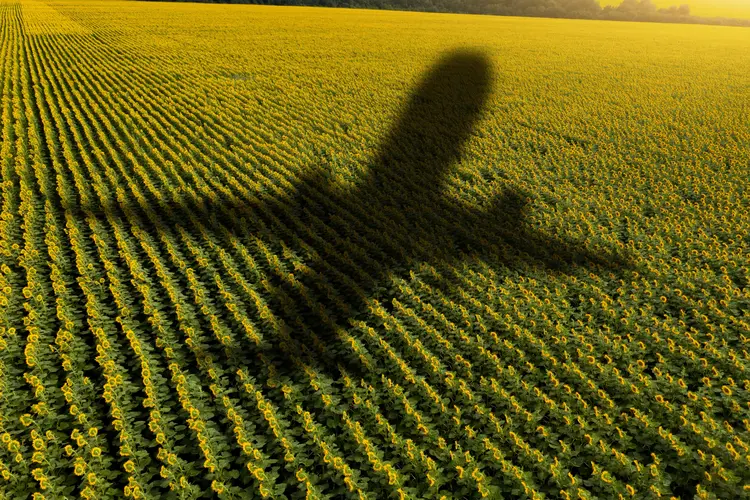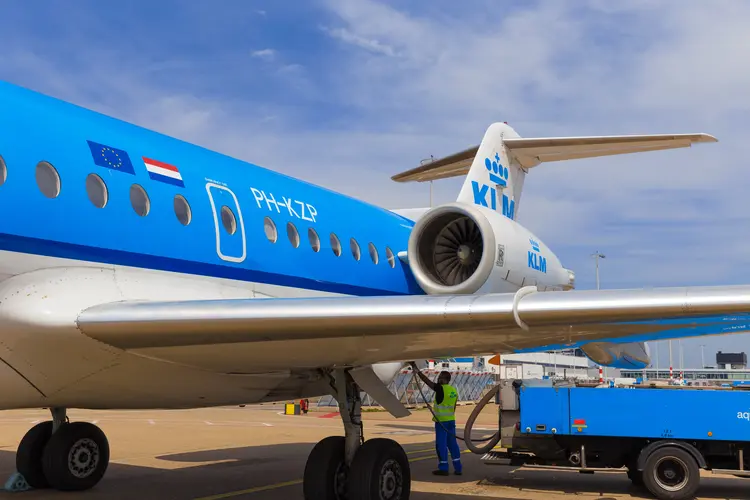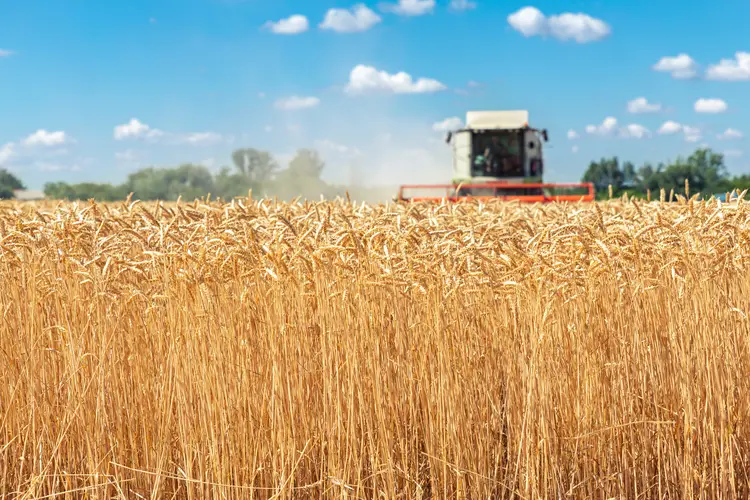
Some tout sustainable aviation fuel as the key to greener flights, but high prices and environmental concerns may hamper rollout
By
It’s a game-changer in the way that we fly. That’s what Chancellor of the Exchequer Rachel Reeves said about sustainable aviation fuel last month. By using this low-carbon biofuel, some are hopeful – including Reeves – that it will offset the environmental cost of expanding airports, such as Heathrow’s decades-long proposed plan to construct another runway and help make plane travel greener.
Enjoying this article? Check out our related reads
There’s good reason to consider ways of mitigating aviation’s negative impact on the environment. After all, the industry contributes to around four per cent of human-induced global warming. But is sustainable aviation fuel the answer to the sector’s environmental woes – or are there more complexities surrounding its use than there initially may seem?
What is sustainable aviation fuel?
Put simply, sustainable aviation fuel (SAF) is a fuel made from renewable feedstocks, such as cooking oils, plant oils, and fats, along with agricultural and forestry waste.
Currently, SAF still needs to be blended with conventional fossil fuels before it can be used for plane travel – regulations state that SAF can make up a maximum of 50 per cent of a fuel mixture.
Because of this, it has a much smaller carbon footprint than traditional jet fuel, and in some production methods, SAF can even have a net-negative greenhouse gas footprint. On average, using SAF reduces emissions by up to 80 per cent across the lifetime of a fuel, and it also can be used in existing planes without having to change any technology within them.

Already, more than 360,000 commercial flights have used sustainable fuel across 46 different airports, mainly within Europe and the US.
Airbus, one of the major airplane manufacturers in the world, says its aircraft are already capable of flying on a blend of up to 50 per cent SAF and 50 per cent traditional fuel. By 2030, it expects all of its aircraft and helicopters will be able to operate with up to 100 per cent SAF without needing to be blended with fossil fuels.
There’s no denying the number of airlines agreeing on use SAF is on the rise – from just two back in 2014 to 42 in 2022. Public support for the fuel is also significant: around 86 per cent of travellers surveyed in an International Air Transport Association (IATA) poll believe governments should provide production incentives for airlines to access SAF; 86 per cent also agreed it should be a priority for oil companies to supply airlines with SAF.
So with all the support, why is it proving difficult to implement the sustainable fuel on such a large scale?
A drop in the ‘fuel ocean’
One major sticking point is its price. There is yet to be a single sustainable energy fuel which is cost-competitive to conventional, more planet-polluting jet fuels: most are around four times as expensive. Latest estimates put US jet fuel at $2.85 per gallon, while SAF is $6.69.
Such a high price point comes from the limited production of SAF itself. Although numbers sound large – back in 2022, around 300 million litres were produced, doubling to 600 million litres in 2023 and 1.3 billion litres in 2024 – these represent just 0.3 per cent of global jet fuel production.
This year, production is expected to rise to 2.7 billion litres, but this still won’t make a substantial difference to the proportion of SAF within global jet fuel production. As such, airlines can expect the high price point to continue.
Although the price may be unattractive to airlines, there is one means that governments are using to encourage more uptake of SAFs: mandates. As chief executive of Shell Wael Sawan explains: The reality is that SAF is more expensive and therefore unless there are mandates – obligations on either customers or airlines – it is difficult to see a penetration that is going to be massive.’
This year, the UK began to impose mandates for sustainable aviation fuel – requiring two per cent of all jet fuel in flights taking off from the UK to be SAF, increasing to 10 per cent in 2030 and 22 per cent by 2040. The EU has also taken a similar measure, requiring fuel suppliers to add an average of 2 per cent SAF to fuel deliveries at European airports.
But it’s easy to see how such mandates could slip. In 2023, in response to pressure from the country’s voters, Sweden slashed its biofuel mandate to 6 per cent. In 2024, the country increased the mandate back to 10 per cent, and such changes show how fluid these measures can be. Another country that may alter its stance on biofuels is the US, where tariffs promised by Trump could affect the availability of feedstock and, in turn, SAF production.
If nations alter their policies, this may, in turn, impede the rate at which SAF is used in the aviation industry and also the environmental success that it could have.
Is it really all that green?
While SAF does have its environmentally friendly benefits compared to kerosene or other traditional jet fuels, scientists are keen to point out that the fuel is not entirely free of issues.
Growing crops to make SAF displaces food crops, meaning more land needs to be converted into cropland. In turn, tearing down more forests and grasslands – and the vial carbon sinks within them – both releases carbon dioxide into the atmosphere and reduces that land’s ability to carry out carbon sequestration in the future.

To hit the US aviation industry’s ambition of net zero by 2050 – which focuses on increasing SAF usage to do so – a vast swathe of crops would need to be grown. The US’s goal of making 35 billion gallons of SAF using ethanol – produced by corn – would require 114 million acres of the crop, an area 20 per cent larger than all of the country’s current land planted with corn. Already, it becomes apparent how focusing on growing crops to power planes puts food and SAF production at loggerheads, and that’s not even considering the environmental toll that producing more crops will likely produce.
One potential way of tackling this issue is to restrict biofuel production to just ‘waste’ biomass – such as plant material left over following harvesting or municipal waste.
‘Everything you flush down the toilet or throw away in the trash, if there’s carbon in it, it can be turned into SAF,’ says director of Washington State University’s Bioproducts, Sciences, and Engineering Lab, Joshua Heyne.
But if these net-zero targets are to be reached, using waste biomass alone won’t cut it. Their capacity could support around 5.5 per cent of European aviation demand in 2030, and up to 20 per cent of the US’s in 2050.
As associate professor of aviation and the environment at Cranfield University Dr Guy Gratton explains: ‘We can’t produce a majority of our fuel requirements this way because we just don’t have the feedstocks. And even if you do, these fuels are not true ‘net zeros’.
Ultimately, for Gratton, using SAFs is merely ‘a stepping stone towards future, genuinely net zero technologies’.
The future for aviation
Sustainable aviation fuels do offer an intriguing alternative to the traditional fuels that have powered flights and polluted the Earth in recent decades. But there is certainly more than meets the eye with these fuels; from high prices impacting take-up, to environmental considerations over their land use. Mandates may help to ensure their increasing use, but these, too, are subject to change as governments change hands and new policies take precedence.
Scaling up the production of SAF is certainly no easy feat and is a goal that must be critically looked at to see whether it is the best approach at all. For now, these biofuels remain a promising yet imperfect step in the right direction for a greener and more sustainable way of flying.




